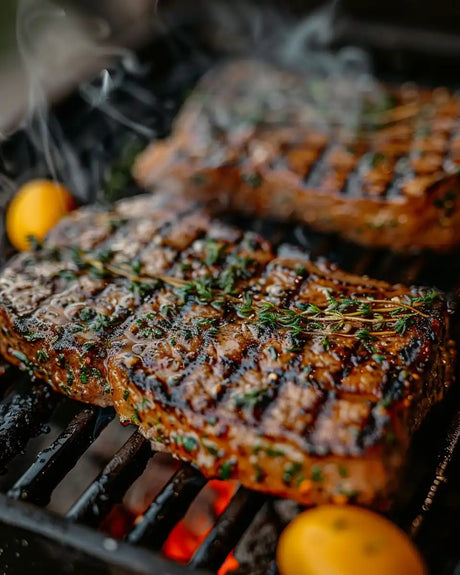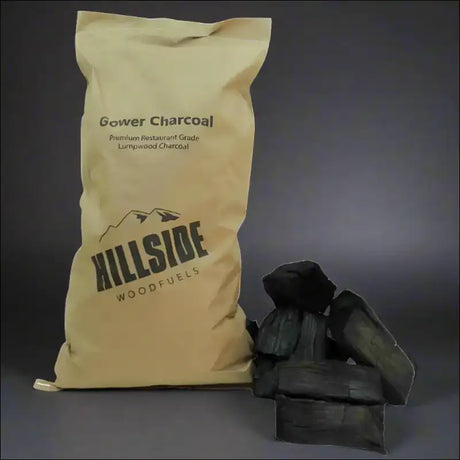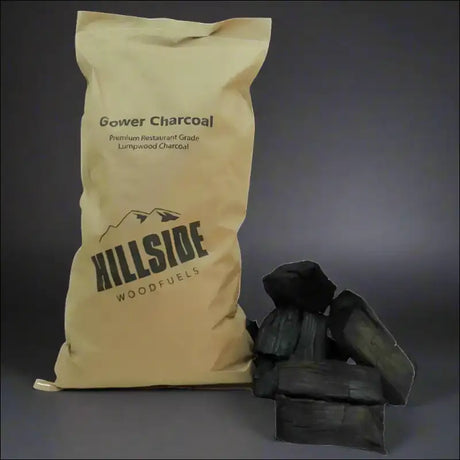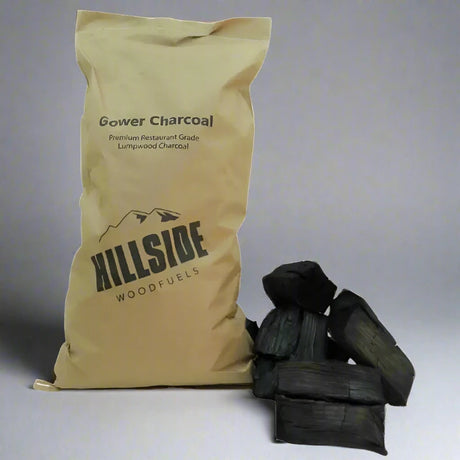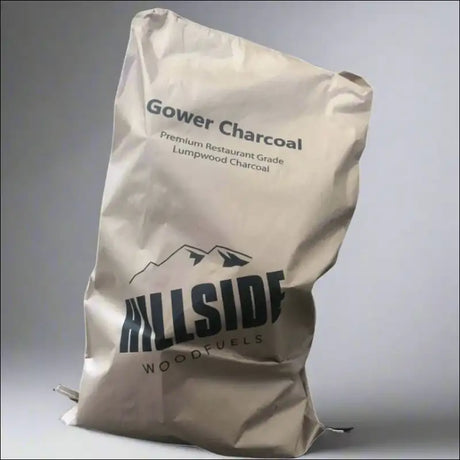Determining the best fuel for barbecuing is crucial for any BBQ enthusiast. This article explores the nuances between kiln dried wood and lumpwood charcoal, two popular choices for BBQ aficionados. Kiln dried wood is celebrated for its ability to impart a distinct flavor and aroma, while lumpwood charcoal is lauded for its ease of use and consistent heat output. We delve into the advantages and drawbacks of each, offering a comprehensive guide to help you make an informed decision for your next BBQ adventure.
Key Takeaways
- Kiln dried wood provides a more authentic BBQ experience with a unique flavor profile and aroma, enhancing the taste of the barbecued food.
- Lumpwood charcoal offers greater convenience and efficiency, with easy lighting, consistent heat, and less smoke production.
- Environmental considerations favor kiln dried wood, which is a more sustainable and chemical-free option compared to some lumpwood charcoals.
- Cost-effectiveness and availability may vary, with lumpwood charcoal generally being more readily available and affordable than specialty kiln dried woods.
- Combining fuels can optimize results, allowing BBQ enthusiasts to benefit from the flavor of wood and the convenience of charcoal.
Understanding the Basics of BBQ Fuels

The Role of Heat in Barbecuing
When we gather around the grill, we're engaging in a dance with heat, the invisible maestro of barbecuing. Heat is the catalyst that transforms raw ingredients into the succulent, smoky flavors we crave. It's not just about the temperature; it's about how the heat is applied and sustained throughout the cooking process.
Heat management is crucial, whether we're searing steaks over a high flame or smoking brisket low and slow. Here's a simple list to remember:
- Direct heat for quick cooking and searing
- Indirect heat for slow cooking and smoking
- Consistent heat for even cooking and flavor development
The key to mastering barbecue is understanding how to control the heat to suit the food you're cooking. This means knowing when to stoke the flames and when to let them simmer down.
Each fuel type, be it kiln dried wood or lumpwood charcoal, offers different benefits in heat control. Kiln dried wood can provide a steady burn and a distinctive aroma, while lumpwood charcoal is prized for its ability to reach high temperatures quickly. As we explore the characteristics of each, we'll discover how they can affect the outcome of our barbecued dishes.
Characteristics of Kiln Dried Wood
When we talk about kiln dried wood, we're referring to logs that have been dried in a controlled environment to reduce their moisture content. This process ensures that the wood is of a higher quality than that which is simply air-dried. Kiln drying removes more moisture than standard seasoning, which makes the wood burn more efficiently and produce less smoke.
- Kiln dried wood is ideal for BBQ because it lights quickly and burns hotter compared to wood that hasn't been dried as thoroughly.
- It also has a lower tendency to produce sparks or dangerous flare-ups, making it a safer choice for family gatherings.
The consistent quality of kiln dried wood means you can expect reliable performance every time you fire up the grill.
Here's a quick look at the benefits of using kiln dried wood for your BBQ:
- Lights easily and reaches cooking temperature rapidly
- Provides a stable and long-lasting heat source
- Less likely to cause smoke or unpleasant odors
- Safer due to reduced risk of sparks and flare-ups
Properties of Lumpwood Charcoal
When we consider lumpwood charcoal, we're looking at a BBQ fuel that is renowned for its purity and performance. Lumpwood charcoal, made from pure charred wood, offers better airflow and burn than briquettes. Its quality is determined by factors such as size, density, moisture content, and the source of the wood. This ensures that we get optimal heat and flavor when barbecuing.
Lumpwood charcoal is also appreciated for its minimal waste and ash production. Unlike other charcoal products, it leaves behind very little residue, making cleanup a breeze. Here's a quick rundown of its key properties:
- High heat output
- Quick lighting time
- Low ash production
- Natural wood flavor
We should always aim for a charcoal that ignites quickly, burns hot, and imparts a natural smokiness to our BBQ dishes. Lumpwood charcoal fits this bill perfectly, making it a favorite among BBQ enthusiasts.
Kiln Dried Wood: Advantages for Authentic BBQ Experience

Flavor Profile and Aroma
When we gather around the grill, the rich scents wafting through the air are as much a part of the experience as the flavors that dance on our tongues. Kiln dried wood offers a unique advantage in this sensory symphony, infusing our food with a distinctive aroma that cannot be replicated by other fuels.
- Birch wood, with its delicate and slightly sweet aroma, complements poultry, pork, and even desserts, enhancing the overall dining experience.
- Cherry wood imparts a subtle, fruity undertone that is perfect for red meats and game, adding a layer of complexity to the taste profile.
The choice of wood not only affects the flavor but also the ambiance of the barbecue, creating an authentic and memorable experience.
Each species of wood carries its own signature scent and flavor profile, which can be matched with specific types of food to elevate the culinary journey. It's an art form that we, as barbecue enthusiasts, relish in perfecting.
Burn Rate and Temperature Control
When we consider the burn rate and temperature control of kiln-dried wood, we're looking at a fuel that offers a unique advantage for barbecue enthusiasts. Kiln-dried wood burns at a consistent rate, allowing for predictable temperature management. This is crucial for long, slow cooks where maintaining a steady heat is essential for tender, flavorful results.
The low moisture content in kiln-dried wood leads to efficient combustion and lower emissions, making it a healthier choice. It's important to note that kiln-dried wood offers health benefits when stored properly, and alternatives like heat logs are available for those seeking different options.
While lumpwood charcoal can reach higher temperatures more quickly, kiln-dried wood provides a more natural and nuanced heat that many pitmasters prefer. This subtle control can make all the difference in crafting the perfect barbecue.
Here's a simple list to keep in mind regarding kiln-dried wood:
- Predictable burn rate
- Efficient combustion
- Lower emissions
- Subtle temperature adjustments
Environmental Considerations
When we consider the environmental impact of our BBQ fuel choices, kiln dried wood stands out for its sustainability. Harvested from responsibly managed forests, this type of wood is a renewable resource that can be replenished over time. Moreover, the kiln drying process itself uses energy to remove moisture, which is a factor to consider when evaluating its overall carbon footprint.
The use of kiln dried wood supports a cycle of growth and renewal, which is crucial for maintaining ecological balance.
However, it's not just about the source of the wood, but also how it burns. Kiln dried wood produces less smoke and particulate emissions compared to its untreated counterparts, making it a cleaner option for the environment. Here's a quick comparison:
- Untreated Wood: Higher moisture content, more smoke, and particulates
- Kiln Dried Wood: Lower moisture content, cleaner burn, less environmental impact
Ultimately, our choice of BBQ fuel can have a significant impact on the environment. By opting for kiln dried wood, we're not only enhancing our BBQ experience but also contributing to a healthier planet.
Lumpwood Charcoal: Efficiency and Convenience

Ease of Use and Lighting
When we consider the ease of use and lighting, lumpwood charcoal stands out as a particularly user-friendly option for barbecuing. It ignites quickly and reaches cooking temperatures rapidly, making it a favorite among grill enthusiasts who value their time. Unlike other forms of charcoal or wood, lumpwood charcoal is straightforward to light, often requiring only a match and some starter material.
- Prepare your grill for lighting by removing any old ash.
- Arrange the lumpwood charcoal in a mound or pyramid shape.
- Use natural firelighters or a chimney starter for an eco-friendly approach.
- Light the charcoal and allow it to burn until it's covered with a thin layer of white ash.
Lumpwood charcoal offers pure wood with minimal ash, ideal for grilling. Provides controllable heat, long burn times, and authentic wood-fired flavor. Choose varieties for specific flavor profiles and optimal performance.
The convenience of lumpwood charcoal is unmatched, especially when you're looking to get your BBQ up and running without the fuss. Its ability to maintain a steady heat over an extended period also means less intervention from us, allowing more time to focus on the art of barbecuing.
Consistency and Heat Output
When we consider the consistency and heat output of lumpwood charcoal, we're talking about a fuel that delivers a reliable performance for our barbecuing sessions. Lumpwood charcoal is renowned for its ability to reach high temperatures quickly and maintain them for an extended period, which is crucial for searing meats to perfection.
One of the key advantages of lumpwood charcoal is its uniformity in size and density, which contributes to its predictable burn rate. This means we can anticipate how the charcoal will behave, allowing for better planning and control during cooking. Here's a quick comparison of lumpwood charcoal's heat output:
- Easy to light
- Burns to a white ash
- Consistent high heat output
Moreover, lumpwood charcoal is suitable for all types of home and professional barbecuing, making it a versatile choice for grill masters of all levels. Its ease of use and the ability to produce a steady source of heat make it a go-to option for many of us.
Cleanliness and Smoke Production
When we consider the cleanliness of our BBQ fuel, lumpwood charcoal stands out for its minimal ash production. Unlike other charcoal or wood options, lumpwood leaves behind very little residue, making cleanup a breeze. The reduced ash also means fewer particles are likely to end up on your food, ensuring a cleaner eating experience.
In terms of smoke production, lumpwood charcoal is known for its relatively low smoke output when compared to kiln dried wood. This characteristic is particularly beneficial for those of us who prefer a more subtle smoky flavor or are cooking in environments where excessive smoke could be problematic. However, it's important to note that the quality of the lumpwood charcoal can greatly influence the amount of smoke produced.
While lumpwood charcoal provides a cleaner burn with less smoke, it's essential to source high-quality charcoal to avoid unwanted flavors or excessive smoke.
Here's a quick comparison of the smoke production and cleanliness between kiln dried wood and lumpwood charcoal:
- Kiln Dried Wood: Higher smoke output, more intense flavor, more ash residue.
- Lumpwood Charcoal: Lower smoke output, subtle flavor, minimal ash residue.
Comparative Analysis: Kiln Dried Wood vs Lumpwood Charcoal

Cost-Effectiveness and Availability
When we consider the cost-effectiveness and availability of BBQ fuels, we must take into account regional variations and market fluctuations. Kiln dried wood is often seen as a premium option due to its ability to impart a distinct flavor and aroma to the food. However, its price can be higher, especially if sourced from specialty suppliers. In contrast, lumpwood charcoal is generally more uniform in cost and widely available at various retail outlets.
Availability is key for spontaneous BBQ sessions, and here lumpwood charcoal often takes the lead. It's stocked by most major stores and can be easily found year-round. Kiln dried wood, while offering an authentic BBQ experience, may require more planning to ensure you have the right quantity and type for your cooking needs.
-
Kiln Dried Wood:
- Higher cost
- May require specialty suppliers
- Offers authentic flavor
-
Lumpwood Charcoal:
- More consistent pricing
- Widely available
- Easier to store and handle
While both fuels have their merits, your choice may ultimately hinge on how frequently you barbecue and whether the unique taste of kiln dried wood justifies its higher cost for you.
Impact on Food Taste and Quality
When we consider the impact on food taste and quality, the choice between kiln dried wood and lumpwood charcoal is significant. Kiln dried wood imparts a distinct smoky flavor that is often associated with traditional barbecuing. The type of wood used can complement different meats and vegetables, adding a layer of complexity to the taste profile.
On the other hand, lumpwood charcoal provides a more neutral flavor, allowing the natural taste of the food to shine through. It's important to note that lumpwood charcoal should be free of additives to ensure it doesn't impart any unwanted flavors onto the food.
-
Flavor Influence
- Kiln Dried Wood: Rich, smoky
- Lumpwood Charcoal: Neutral, clean
Choosing the right fuel can elevate the barbecuing experience by enhancing the food's taste and overall quality. It's not just about cooking; it's about crafting an unforgettable culinary journey.
Suitability for Different Types of BBQs
When we consider the suitability of kiln dried wood and lumpwood charcoal for different types of BBQs, we must acknowledge the versatility of both fuels. Kiln dried wood is often favored for its ability to impart a distinct smoky flavor, especially in traditional smoking and slow-cooking methods. It's the go-to choice for pitmasters aiming for that authentic barbecue taste.
On the other hand, lumpwood charcoal is prized for its ease of reaching high temperatures quickly, making it ideal for grilling meats that require a sear, such as steaks and burgers. Its consistent burn also allows for more predictable cooking times, which is essential when hosting large gatherings or operating a commercial BBQ.
The choice between kiln dried wood and lumpwood charcoal may ultimately come down to the specific demands of the BBQ event and personal preference.
Here's a quick reference to help you decide:
- Kiln Dried Wood: Best for smoking and slow-cooking; imparts a rich flavor.
- Lumpwood Charcoal: Preferred for high-heat grilling; offers quick and even heating.
Each type of fuel has its own set of benefits that can enhance the barbecuing experience. Whether you're a weekend warrior in your backyard or a professional chef, understanding these nuances will help you select the right fuel for your next BBQ.
Expert Tips for Choosing the Right BBQ Fuel

Assessing Your Barbecuing Needs
When we consider our barbecuing needs, the first step is to understand the type of cooking we'll be doing. Are we aiming for a slow and low smoke, or a quick sear over high heat? The choice between kiln dried wood and lumpwood charcoal can significantly affect the outcome. Kiln dried wood is excellent for a traditional BBQ flavor, but it requires more attention to maintain consistent temperatures.
For those of us concerned with the environmental impact, the debate between coal and charcoal is crucial. Sustainable charcoal options, such as lumpwood charcoal, offer a compromise between eco-friendliness and convenience. On the other hand, the burning qualities of ash firewood, especially sourced from the UK, provide a unique experience that's hard to replicate with charcoal.
It's essential to weigh the pros and cons of each fuel type in relation to our specific barbecuing scenarios. This assessment will guide us in making an informed decision that aligns with our culinary goals and environmental values.
Finally, consider the availability and cost of the fuel sources. While lumpwood charcoal might be more readily available, kiln dried wood can offer a more authentic taste that some BBQ enthusiasts are willing to pay a premium for.
Combining Fuels for Optimal Results
We've discovered that the secret to a perfect BBQ may lie in the art of combining fuels. By using kiln dried wood to start your fire, you benefit from the initial high heat and aromatic smoke that imparts that authentic BBQ flavor. As the fire settles, adding lumpwood charcoal can help maintain a consistent temperature and extend the burn time. This method not only enhances the flavor profile but also optimizes fuel efficiency.
- Start with kiln dried wood for a quick and hot burn.
- Add lumpwood charcoal to sustain the heat over a longer period.
- Adjust the ratio according to the type of food and desired smoke intensity.
Boldly experiment with different combinations to find the balance that works best for your BBQ style. Remember, there's no one-size-fits-all solution; it's about finding what suits your palate and the demands of the dish you're preparing. Our guide to choosing and using firewood suggests considering species, dryness, and type for a clean, hot burn. Even rain-damaged wood can be repurposed, enhancing the fire experience when paired with charcoal and kindling.
Safety and Storage Recommendations
When it comes to barbecuing, safety should always be our top priority. Proper storage of BBQ fuels is crucial to prevent accidents and ensure a safe grilling environment. For both kiln dried wood and lumpwood charcoal, it's essential to keep them in a cool, dry place away from direct sunlight and moisture to prevent any unwanted ignition.
Firelighters, especially those made from sustainable, restaurant-grade lumpwood charcoal, are a great addition to our BBQ toolkit. They are ethical, environmentally-friendly, easy to use, and safe for a superior BBQ experience. Here's a quick checklist for safe storage:
- Store fuels in a dry, ventilated area.
- Keep away from flammable liquids and gases.
- Ensure children and pets cannot access the storage area.
- Regularly check for any signs of dampness or pests.
Remember, the right storage not only preserves the quality of your BBQ fuel but also protects you and your loved ones. By following these simple guidelines, we can enjoy countless safe and delicious barbecuing sessions.
Conclusion
The choice between kiln-dried wood and lumpwood charcoal for BBQ largely depends on personal preference and the specific needs of the barbecue event. Kiln-dried wood offers a traditional flavor and a more natural burning process, which is great for those who prioritize taste and authenticity in their BBQ. On the other hand, lumpwood charcoal provides a consistent heat source and is easier to manage, making it ideal for convenience and quick grilling sessions. Both options have their merits, and the best choice may be to have both on hand to suit different occasions.
Ultimately, the quality of the BBQ will come down to the skill of the griller and the quality of the ingredients, whether you choose the smoky flavors of kiln-dried wood or the efficiency of lumpwood charcoal.
Frequently Asked Questions
What are the main differences between kiln dried wood and lumpwood charcoal?
Kiln dried wood is a natural hardwood that offers a longer burn time and a more authentic smoke flavor, while lumpwood charcoal lights more easily, burns hotter, and produces less smoke and ash.
Can I use kiln dried wood for all types of BBQs?
Kiln dried wood is versatile and can be used for most types of BBQs, especially where you're looking for a smoky flavor. However, it's important to ensure the wood is properly ignited and maintained for consistent heat.
Is lumpwood charcoal more environmentally friendly than kiln dried wood?
Lumpwood charcoal is often considered more environmentally friendly due to its efficient burn and lower production of smoke and ash. However, sourcing and production methods can affect the overall environmental impact.
How does the burn rate of kiln dried wood compare to that of lumpwood charcoal?
Kiln dried wood generally has a slower burn rate compared to lumpwood charcoal, allowing for a longer cooking time and a more gradual release of heat.
Does the type of BBQ fuel I use affect the taste of the food?
Yes, the fuel type can significantly affect the taste. Kiln dried wood imparts a distinct smoky flavor to the food, while lumpwood charcoal provides a more neutral taste, allowing the natural flavors of the food to stand out.
What should I consider when choosing between kiln dried wood and lumpwood charcoal for my BBQ?
Consider factors like the desired flavor profile, ease of use, burn time, temperature control, and environmental impact. Also, think about the type of BBQ you're using and the kind of food you're cooking.


